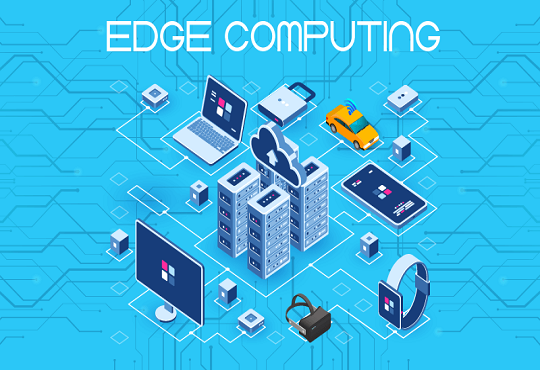How edge data centres will accelerate digital transformation
Abhrasnata Das | Friday, 14 January 2022, 10:21 IST

In its recent endeavor, RailTel is set to install edge data centres across 102 rural and semi-urban areas to accelerate the digital transformation in such places across the country. The cost of the project is estimated to be INR 500 crore and will be implemented under the PPP model. At its initial stage the proposed capacity of the data centres will be around 5 to 10 KW each.
With the recent surge in the demand for digital transformation across the country Edge computing has evolved to be the foremost option in leveraging the same. Having said that, let’s understand key areas edge data centres will improvise to upgrade the overall experience of digital journey.
Aid to Latency- sensitive applications
By eliminating the need to overhaul the prohibitive amounts of data to the cloud, application edge computing will become a major turn around point for achieving highly responsive applications. For example- the most obvious use of edge data centres will be in streaming high-definition media, from online gaming to augmented reality (AR) applications for service technicians to next-generation sports stadiums’ streaming of real-time videos.
Furthermore, the deployment of edge computing in the coming days will have a significant influence on the healthcare industry. Instead of relying on centralized cloud services, healthcare institutions may store and analyse data locally. As a result, professionals can have faster access to critical medical data, such as MRI or CT scans, or information from an ambulance or ER, allowing for speedier diagnosis or treatments.
Real-time visibility
Today retailers of different segments are rapidly deploying IoT systems like point-of-sale, digital signage, and asset tracking in their stores and warehouses.
In these situations edge data centres can be beneficial in gaining real-time visibility and summarizing data into meaningful events before sending to the cloud or centralized data center, reducing data transfer and storage costs.
Reduced Costs
The growing number of devices and applications generates a vast quantity of data. If all data must be routed back to a single data centre for processing, firms may find themselves needing to scale out their data centre infrastructure to meet increased demand, which has an influence on both CapEx and OpEx expenses. Furthermore, if all of that data must be returned to a central location, enterprises must consider the expenses of data backhauling.
However, with edge data centres these data can be stored locally; thereby eliminating the need for constant upgradation of the main data centre. In addition, storing data in the edge data centres will also enable easy and fast access.
Improved usability and user experience
The ongoing Covid-19 pandemic has shifted the workforce to remote workforce systems. This all over shift from the dedicated business networks to shared residential circuits had a great impact on the global network infrastructures.
This existing scenario of distance and destination that network traffic travels to connect a remote worker to their corporate network resources has degraded the overall user experience and lead businesses to utilize a different content delivery strategy.
However, with localized edge data centres, the existing burden on the global data network can be eliminated; therefore generating an overall better experience for employees, partners, and customers.
Securing distributed assets
Energy and utility companies, for example, may benefit from implementing edge capabilities to enable real-time interventions for operational efficiency. Operating an oil rig might include maintaining a variety of legacy assets from many manufacturers. "Edge-orchestration systems can assist in swiftly connecting and disconnecting heterogeneous devices (each with distinct interfaces and communication protocols) and achieving zero-touch and zero-trust administration of these devices," according to the ISG research.
Edge computing, according to Andhare, may conduct real-time operational choices based on local analysis of sensor data for remote operations with little or no access to the cloud, such as deep in a mine or out in an agricultural field.
Many IoT sensors used in warehouses, factories, fields, and vehicles have adopted an asynchronous data model approach.
Upgraded service delivery mode
With the use of edge computing, public sectors in India like Banking, insurance firms, Railways and lot more, can deliver an upgraded customer experience to its customers. Through edge computing the digital India initiative can be actualized at the remotest part of the country, delivering a highly personalized and glitch free service to the users with the help of bots and voice-enabled intelligent assistants.
With the increased computation, connection, and other capability available in these IoT form factors, many of these devices can now execute some of their own computing tasks without requiring real-time interaction with any other resource. Field sensors that can evaluate soil and moisture data can offer a more immediate reaction to control equipment, adding more value than sensors that rely on a cloud-based method to execute computing activities.
CXO Insights
COVID Crisis for Hotels: How to Plan Forward
By Siddharth Goenka, MD Octave Hotels & Founder, Aiosell Technologies
Enterprise Storage: Turning Data into Intelligence
By Vivekanand Venugopal, VP & GM - APAC, Hitachi Data Systems
POS Security-A Growing Priority for Retailers





